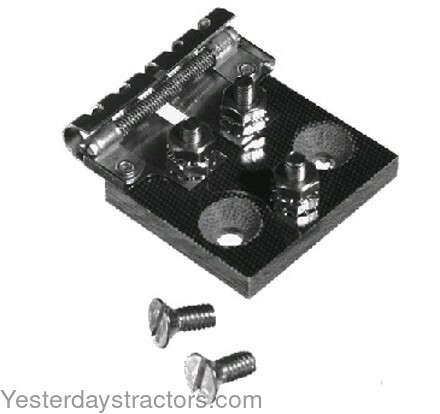Ron Petterson
Member
For a number of years I have had issues with an 8N with front mount distributor burning points. Original 6v system, not 12v conversion. I have been told bad points, so I bought NAPA, New Holland and Blue Streak. Same issue with all. Was told that it was bad bushings in distributor, but there is no identifiable change in point settings if the shaft is moved after resetting gap. So I contacted Jeff in the parts about a new distributor and he said it sounded like it could be bad resistor allowing to high a current to distributor. With that, I used an ohm meter on the resistor and this was the result I shared with jeff. And he said share it on the forum for input.
Here is what I'm getting.
My meter settings are at 2m, 200k, 20k, 2 and 200 settings
Was not able to get a reading on the meter for the first three settings.
At 2 the reading was .002
At 200 the reading jumped to 4.0 then dropped to 2.0, fluctuating between that and 2.4
The switch was off on the tractor. Wires were not removed from resistor.
The measurement was between the two post in line, not the third one making a triangle.
And finally, my ohm meter gives a reading of .2 at the 200 setting when leads touched to themselves.
So my questions.
Did I measure the resistance correctly or do I need to do something different?
Was the reading on the resistance OK.
If these reading are OK, then I am going to buy the replacement distributor so I don't have to remove, clean and reset points after a couple hours running. It runs fine as long as it has started, but once turned off, it will not refire.
I also have been removing battery cable to remove any power that might be leaking through the system when not running that might have been getting to the points. Not something that was likely, but did it anyway.
Thanks for any info you can share.
And I know little to nothing about electronics . So I ask any info you provide to be kept simple so I can understand. Yes I am dumb when it comes to electronics.
I would have had a mechinic who knows these tractors come and check this for me, but they are far a few between in this area and hard to find
Here is what I'm getting.
My meter settings are at 2m, 200k, 20k, 2 and 200 settings
Was not able to get a reading on the meter for the first three settings.
At 2 the reading was .002
At 200 the reading jumped to 4.0 then dropped to 2.0, fluctuating between that and 2.4
The switch was off on the tractor. Wires were not removed from resistor.
The measurement was between the two post in line, not the third one making a triangle.
And finally, my ohm meter gives a reading of .2 at the 200 setting when leads touched to themselves.
So my questions.
Did I measure the resistance correctly or do I need to do something different?
Was the reading on the resistance OK.
If these reading are OK, then I am going to buy the replacement distributor so I don't have to remove, clean and reset points after a couple hours running. It runs fine as long as it has started, but once turned off, it will not refire.
I also have been removing battery cable to remove any power that might be leaking through the system when not running that might have been getting to the points. Not something that was likely, but did it anyway.
Thanks for any info you can share.
And I know little to nothing about electronics . So I ask any info you provide to be kept simple so I can understand. Yes I am dumb when it comes to electronics.
I would have had a mechinic who knows these tractors come and check this for me, but they are far a few between in this area and hard to find


